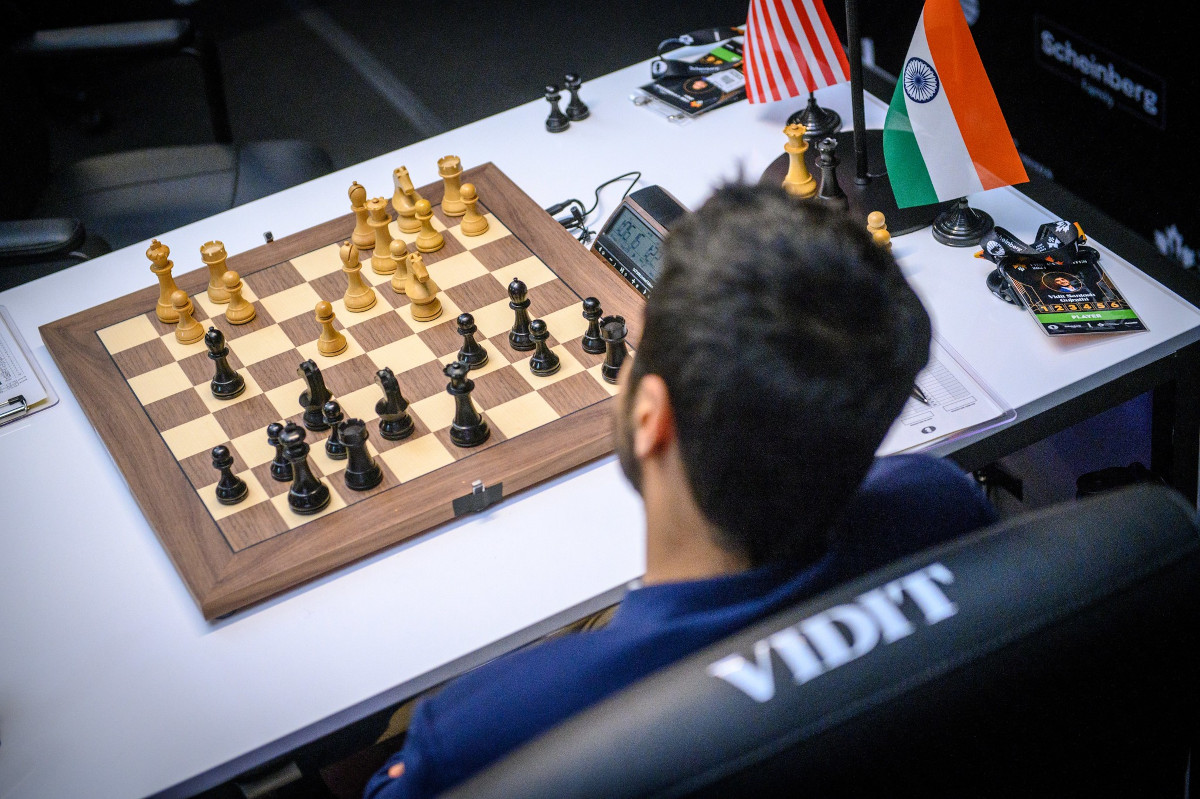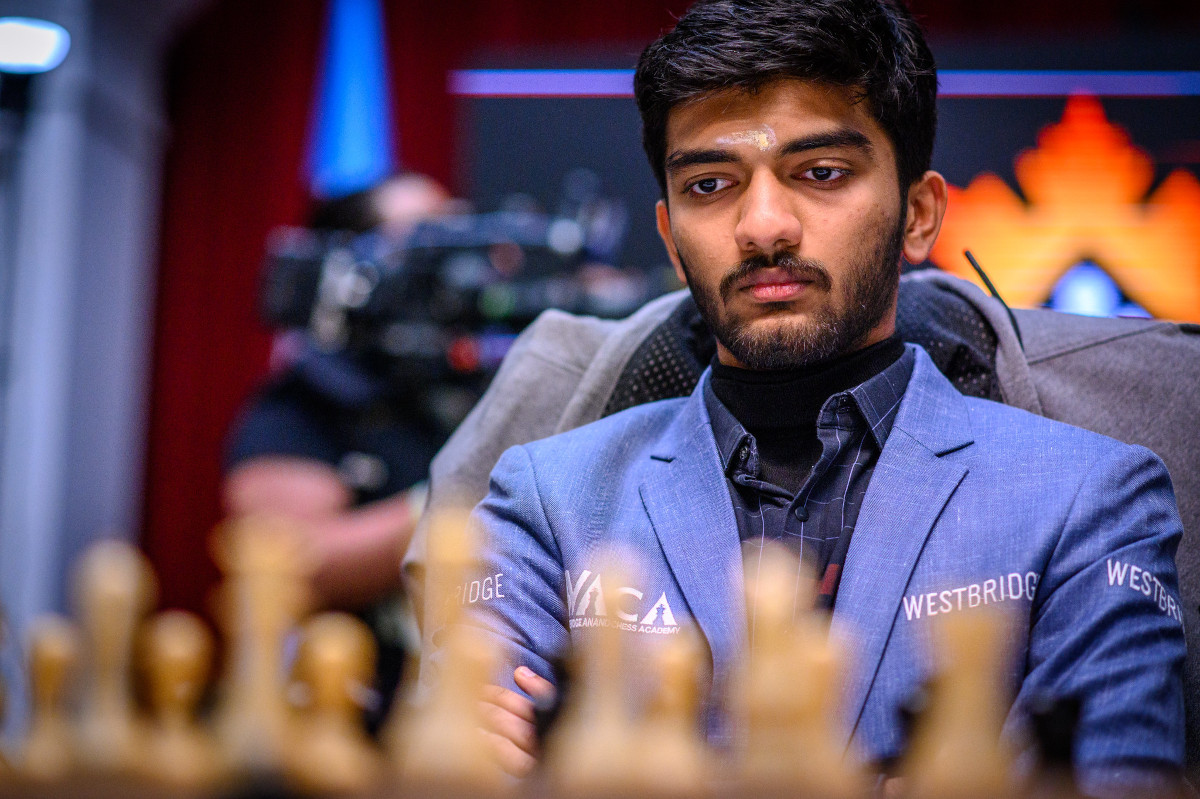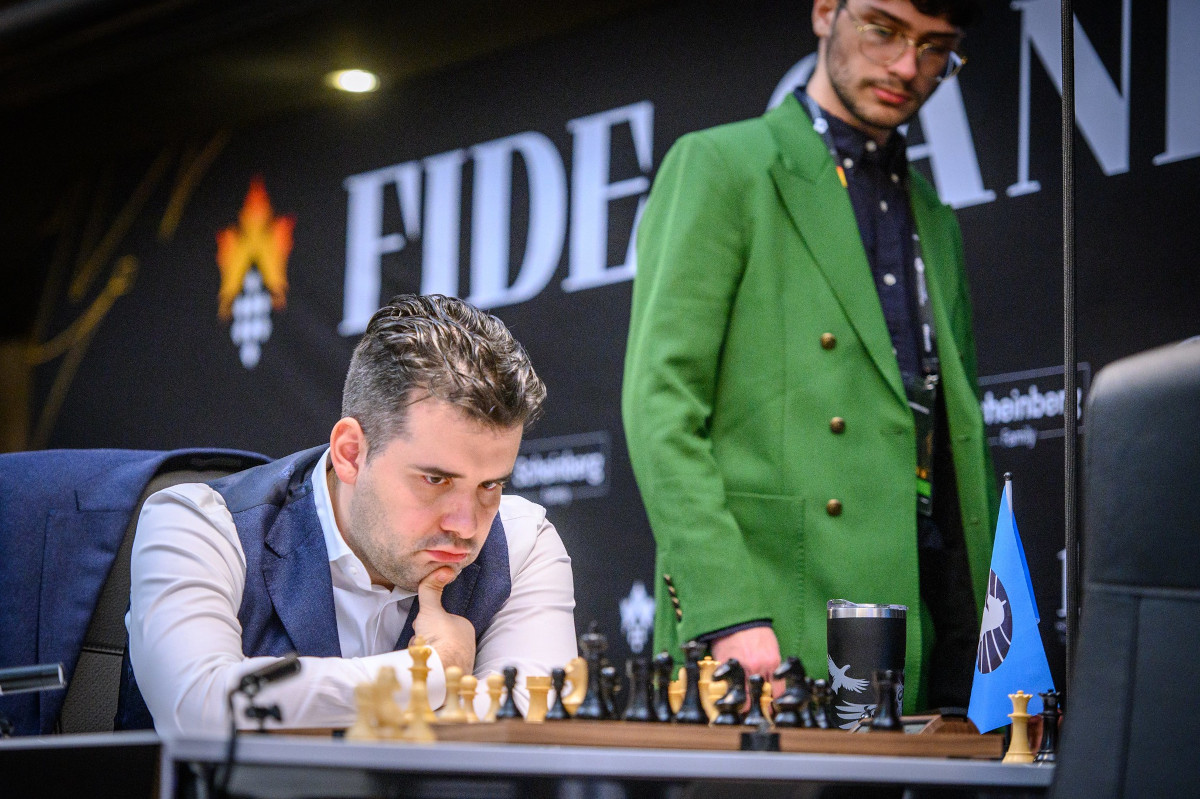.jpeg)

.jpeg)
Eight of the very best players in the world showcased both deep theoretical preparation and incredible tactical abilities in a memorable second round at the Candidates Tournament in Toronto. All four games ended decisively, with Fabiano Caruana, Ian Nepomniachtchi, Gukesh D and Vidit Gujrathi scoring full points to become the event’s co-leaders going into round 3.
Vidit played a remarkable novelty with black and converted his advantage delightfully to end Hikaru Nakamura’s 47-game undefeated streak; Gukesh and Praggnanandhaa played a creative, sharp game which could have gone either way but ended up favouring Gukesh; Nepomniachtchi cold-bloodedly outplayed Alireza Firouzja in a tactical slugfest; while Caruana made the most of Nijat Abasov’s mishandling of a major-piece middlegame.
With half the field sharing the lead a full point ahead of the other half, it is very likely that more entertaining chess will be played in the coming days. What a start it has been to the much anticipated double round-robin!
Results - Round 2

Fabiano Caruana beat Nijat Abasov with the white pieces | Photo: FIDE / Michal Walusza
An extremely well-prepared Vidit twice offered Nakamura a pawn out of a Ruy Lopez. The U.S. grandmaster took the bait the second time around.
In hindsight, given the fact that Nakamura resigned the game with his queenside knight still on b1, the quiet 10.Nbd2 seems to be the most convenient move here.
However, Nakamura probably considered this game (with white) to be a good chance to score a win and, after all, going for 10.dxe5 dxe5 11.Nxe5 is by no means losing.
Vidit’s 11...Bxh3, blitzed out after merely 11 seconds, might have prompted Nakamura to rethink his previous decision, though.
Engines give 11.gxh3 as best here, when Vidit was surely ready to play 11...Qb8 — 12.Nf3, for example, fails to 12.Qg3, making use of the pin along the dark-squared diagonal. In case of 12.Bf4, Black would go 12...Bc7, which is why the queen had to be placed on b8 instead of c7 in the previous move.
None of this appeared on the board, though, as Nakamura realised that he was facing a sharply prepared opponent and opted for 11.Nc4 instead, and Black was already in the driver’s seat — a dream situation for Vidit in such a strong tournament!
What followed was a masterclass by the Indian grandmaster, who patiently improved his pieces while Nakamura struggled to deal with both tactical and strategic threats.
Vidit’s 18...f5 was praised by the commentators, as Nakamura found nothing better than to play the imprecise 19.f4 to stop the black pawn in its tracks.
Instead of saving his e5-knight, Vidit replied by the correct 19...Bb6, pinning the e3-knight and threatening to increase the pressure via ...Nd5 and potentially ...Qg5 or ...Qh4.
This was the beginning of the end for White, as there was no way to deal with the attacking threats without making major concessions. Nakamura resigned the game after Vidit’s discovered check on move 29.
29...Nf1+ was game over. Note that White’s rook and knight on the queenside never left their initial squares. A remarkable victory for Vidit, who was the first player to beat Nakamura in a classical game since the 2022 Candidates Tournament in Madrid!

One for the books! | Photo: FIDE / Michal Walusza
Much like Vidit, Pragg managed to out-prepare his opponent in round 2. Out of a Catalan, the 18-year-old (who is actually nine months older than Gukesh) fearlessly sacrificed two pawns before move 15 — moreover, he offered yet another sacrifice on move 16, which Gukesh understandably rejected.
Normal engines — the Candidates have access to more powerful computers — give Black an edge after 15.e6 fxe6, but given the fact that Pragg had blitzed out all his moves up to this point, it made sense for Gukesh to choose 15...f5 instead (15...c6 was also playable).
After 16.Ne5 Nf6, Pragg had 1 hour and 50 minutes to Gukesh’s 40 minutes. However, Black’s rejection of the third pawn sacrifice had Pragg thinking for the first time on move 17 — in an incredibly complex position!
Naturally, both players made imprecisions in the ensuing struggle. Pragg was material down but had a knight on f7, and on move 23 he further increased the pressure on his compatriot by giving up his light-squared bishop for two central pawns.
23.Bxd5 cxd5 24.Nxd5 followed, as Pragg now had 11 minutes to Gukesh’s 14 with 16 moves to go before reaching the time control.
After 24...Be7, engines evaluate the position as even, since White can implicitly offer a draw by repetition with 25.Nh6+
If White gives the check from h6, Black can go for an immediate repetition with 25.Kh8 Nf7+ etcetera, while in case of 25.gxh6 Qg4+ 26.Bg5 h4, a more manageable position would appear on the board, one that could still go either way, nonetheless.
However, Pragg opted for 25.Qg4 instead, insisting on the attack. Gukesh then replied with the strong 25...Nd8, placing pieces on 5 out of 8 squares on the first rank (from Black’s viewpoint).
White cannot escape simplifications now, as after 26.Nxd8 Bxd8 Black is simply a piece up (for a pawn) and it is difficult to create mating threats against the monarch on g8.
Gukesh went on to liberate his pieces one by one until forcing his compatriot to throw in the towel on move 33. The game was a tense struggle between two of the most brave and creative players in the circuit!

Dommaraju Gukesh | Photo: FIDE / Michal Walusza
This was another case of players showing deep preparation in a sharp opening line. Nepomniachtchi, who won the two previous editions of the Candidates Tournament, gave up a pawn early on, and soon pushed his h-pawn all the way to the sixth rank, leaving both kings vulnerable for the rest of the game.
Firouzja here found the correct 21...g5 (a similar reaction to Gukesh’s ...f7-f5, though in this case engines give it as the best continuation in the position).
By move 31, White was three pawns down but had a winning position according to the computers. Moreover, Firouzja’s clock had fallen below the 5-minute mark. Still, Nepomniachtchi’s handling of the final, tactical phase of the game was remarkable.
Black’s queen and knight tandem looks scary, but it turns out that the white king can escape a potential attack via e2-d3, as was later seen in the game. On its part, White’s queen and light-squared bishop are tremendously annoying on the seventh rank, while the dark-squared bishop on b2 will become a monster once the c-pawn gets out of the way.
Firouzja here played 31...Qh3+, when 31...Qh1+ was more trying for White.
Five moves later, Nepomniachtchi managed to finally play 36.c4, as his king stood safely on e3. Black still had two extra pawns at that point.
With seconds on his clock, Firouzja went for 36...Rxd5 here, but soon after the time control was reached, he had to admit defeat. In the final position, White had converted his dynamic edge into a material advantage — it was Nepomniachtchi who had an extra rook when his young opponent resigned the game!

Ian Nepomniachtchi and Alireza Firouzja | Photo: FIDE / Michal Walusza
Watch tons of high-quality content on ChessBase India’s YouTube channel!
| Advertising |